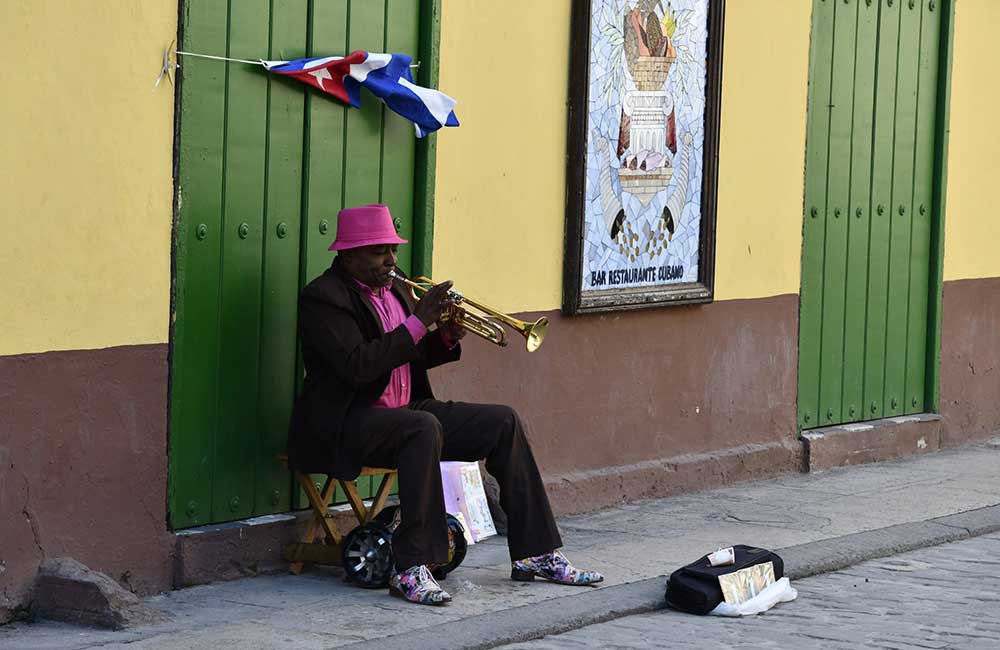From Cuban cigars and vintage cars to rustic buildings and warm people, an OT reader’s account of her trip to Cuba
Akruti Patel
October 28 , 2020
At my university, I remember watching Buenavista Social Club, a legendary film created by Ry Cooder and Wim Wenders who travel around Havana to rediscover Cuban music’s legends. It featured iconic Cuban musicians like Compay Segundo, Ibrahim Ferrer, Rubén González, and Octavio Calderon. “I will travel to this island once in my lifetime to explore its fascinations,” I told myself as the movie credits rolled and the lights turned on. Fast forward ten years later, I was flying over the Caribbean islands, rejoicing as my dream turned true, literally.
Rustic facades, washed-out walls, colourful alleys, and grinning faces; Cuba is an unsung poem about glamour and decay, a radical past, and a promising future. It is a lively country and a must-visit for someone who loves to document the history, culture, and the hidden treasures in all its colours.

The writer in Cuba
Road-tripping in Cuba included Havana’s hustle-bustle, the maggot-dominated Vinales, to the gorgeous beaches of Cayo Levisa, and the museum town of Trinidad. Driving along with these rustic landmarks certainly makes me say Cuba is nothing without the Cubans. The chaotic streets are busy with chattering neighbours relaxing in rocking chairs, kids peddling their bicycles, and older men playing domino or chess. The lack of technology and limited internet access makes socialising more of a necessity in Cuba; people rely on one another for their entertainment and news.
Turn into any street, and you will hear resounding live music, be it a café, restaurant, bar, or broken pavements. It’s a delight to see a passerby suddenly break into a dance step, and then, just continue walking. As a traveller, the Cuban attitude of honesty and openness was helpful, making me feel comfortable while interacting with people and understanding the Cuban culture up close.
Despite their economic status, Cubans show strong loyalty to their homeland, and to their cigars. I used to think cigars were just overhyped, but I was wrong. Cigars have played an integral role in Cuba’s history and development, and I visited the tobacco plantations at Vinales to witness this reality.
What makes Cuban cigars world famous are the farmers who have been in the business for generations. Interestingly, hundreds of cigars are hand-rolled every day, and farmers still use their horse carts as the primary mode of transport for tobacco. Jorge, a local tobacco farmer, took us through his plantation, demonstrating the entire process of cigar making. “Would you like to take a puff, senora?” he asked, while rolling one. The image of tobacco plantations with thatched huts and gigantic limestone mogotes in the background is unforgettable.
And then there are those amazing classic cars that Cuba is known for. Cruising, in a classic ’57 Chevy Bel Air through the streets old Havana, was on my bucket list. Riding this elegant car, I asked my driver, “Why does Cuba have so many vintage cars?”
He explained how post the Cuban Revolution, the US embargo was established, and the Fidel Castro government banned the import of American cars and mechanical parts. That’s why Cuba has become a living museum for vintage cars. An average Cuban makes $25 per month; hence, maintenance is expensive. But they still manage to put together some parts and Russian engines to keep them running.
Looking through my camera’s viewfinder and capturing the colourful cars with colonial buildings in the backdrop, I realised how these two significant icons are not here to stay indefinitely. Surviving the passage of time, autos and architecture have established a colourful visual rapport. An elusive but raw beauty wraps around the whole of Cuba.

Old houses in Havana
From Old Havana’s decaying facades to Trinidad’s colourful colonial houses, the architecture here stands as a testimony to time travel. There is a synergy in existence; next to a freshly renovated hotel would be a crumbling home of the city’s working-class. Aged and ornate stairwells lead to contoured balconies hanging over the sidewalks, accommodating a hostel and a salon.Cuba is slowly strolling towards change as it gradually opens its economy to privatisation. Instead of these crumbling facades, it would not be surprising to spot a restaurant chain or a branded clothing store in the coming years. Now is the time. Visit Cuba before the vintage charm fades away.

